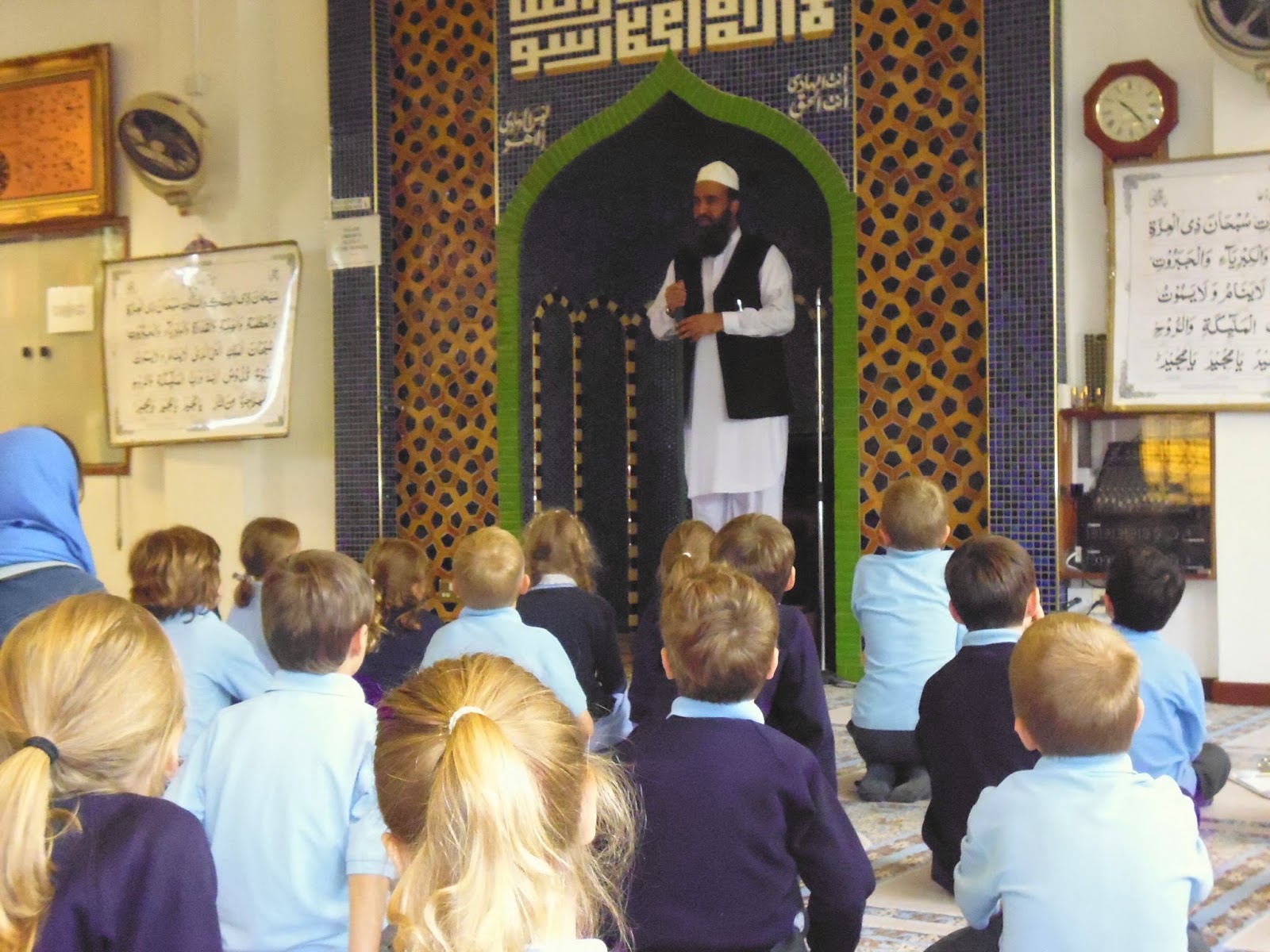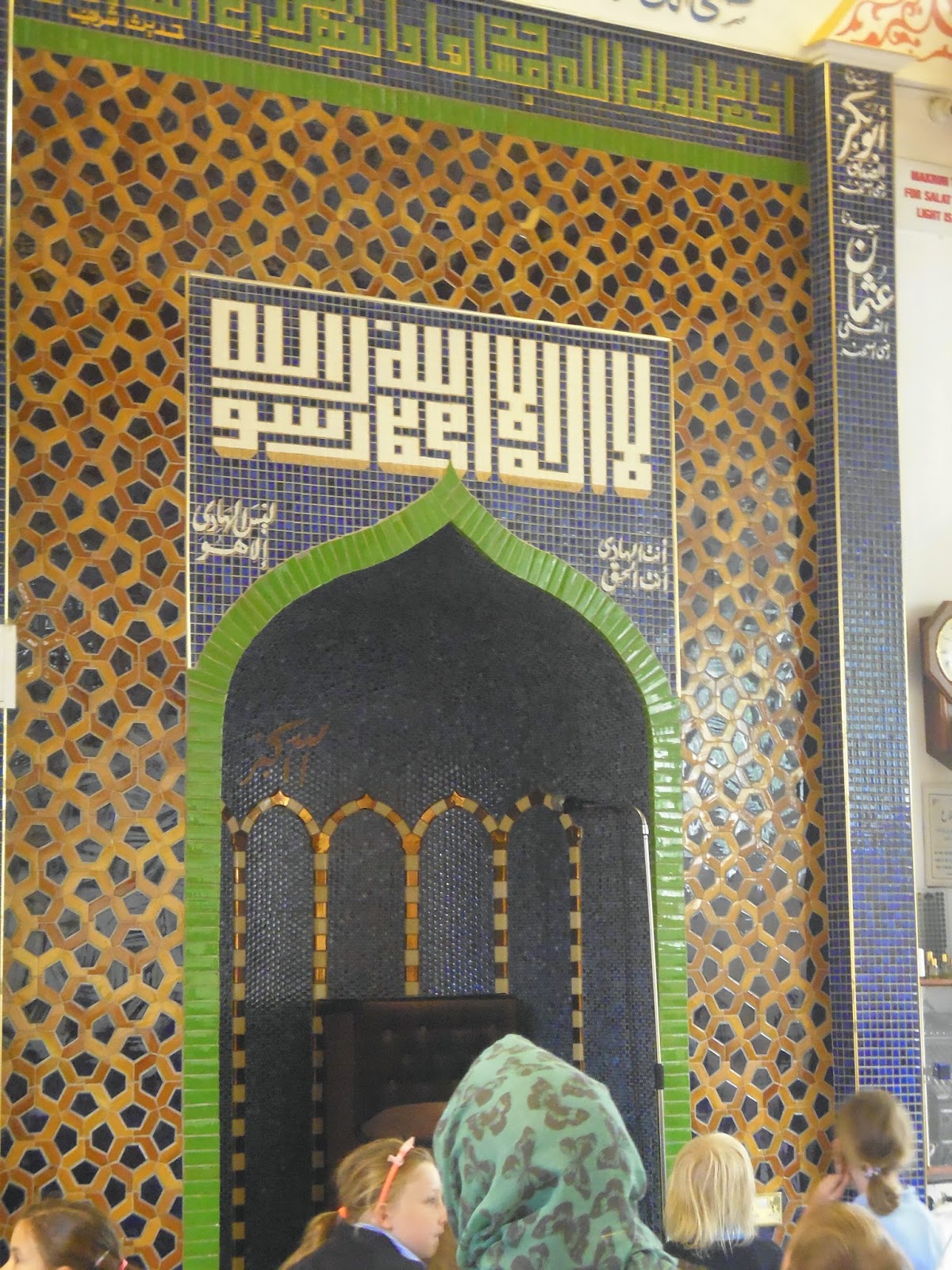In the Summer term, Year 1 turned to learning about Special
Books.
To help us understand how someone might feel about their
Holy Book, we brought in our own favourite books to share with our class. We
explained why they were special to us and how we would want other people to
respect them even if they weren’t special to them!
Then we found out about stories which have been passed on
orally before they were written down. Sometimes these might have been
eye-witness accounts, where the writer has tried to tell the reader what they
felt was the important message behind them. We played some messenger-games
which made us realise that we often remember only the most important parts of
an account. We learned that Jesus had a friend called Peter who gave
eye-witness accounts of what Jesus said and did: these were later written down
and included in the Bible.
We then made our own special Class Book, with a portrait and
information about each member of our class. We discussed how we would make it
beautiful, and how to keep it safe, clean and available to read. We also made
up rules so that visitors would know how to care for it too. We discovered that
most faith communities have special, ‘holy’ books; we found out what these
might contain and how they are treated with respect.
Next, we went on to learn about some of the Holy Books of
different faiths.
We learned
that the Christian Bible is actually a whole library containing 66 books with a
variety of styles! For Christians it is also like a ‘light’ to help them on
their journey through life, and like a ‘letter’ with messages from God. One of
our class pretended to be an Eagle carrying a Bible message to several
countries around the world, then the children in each country passed on the
message they had heard. We had to listen very carefully so that we would
remember it and pass it on accurately!
The
Secretary of State for Education gave our school an enormous Bible, but it was
written in very old English. So we were glad that lots of translations have been
made into modern English that we can understand! When we heard a story from one
of these – about a lost sheep – we suggested our own ideas as to what the story
might want to teach us today.
For
Christians, the most important person in the Bible is Jesus; so we then learned
about an account in the Bible of when Jesus calmed a storm which was
frightening his friends in their boat. We acted out the story, and imagined how
we might have felt if we had been there too.
We also played a blind-fold game to help us decide what makes someone
trust-worthy.
Next, we
learned about the Jewish Holy Book, the Torah. One of the children played the
role of the Rabbi, and we all walked from the playground to our pretend
synagogue, as Jews try not to drive on the Sabbath. We acted out the Simchat
Torah celebrations, as if we had just finished a year’s cycle of reading from
the Torah. Learning how precious the Torah is to Jews reminded us of how we too
take great care of the Class Special Book we made. We then made our own scrolls
and wrote in them our ideas of ‘Guidelines for Living’.
In
preparation for our school Islamic Focus Week, we learned about Muhammad, who
is very important to Muslims. We heard the story of how he was given messages
from God which he had to remember carefully and pass on to other people. We
played some memory games, and discussed what we do to help us remember. Some of
us were even able to list thirty items from memory, when playing ‘I went to the
market’!
In Islamic
Focus Week, we looked at a Qur’an on its special stand, learned why it is
special to Muslims and how it should be treated with respect. We heard a story
from the Qur’an about a Crying Camel, and discussed what that might teach
Muslims today.
In Year 2, during the Summer term, we have been
focusing on ‘Special Places’.
We began by going way back in time to when people built stone circles. We tried to solve the ‘Mystery’ of how and why they might be there. We went outside to re-create the Callanais Stone Circle, using children as the stones, and acting out some of the folklore stories which have been passed down through the years. We discussed what it is that makes a place ‘mysterious’, and decided that in RE there are many questions which can be asked to which even adults don’t have all the answers! We still found it fun to suggest our own conclusions!


Next, we thought about special places which we do know
locally, especially those which belong to a group or community. To help us
understand how it feels to share a special place, we worked in groups to
consider what we appreciate about our own classroom, and how we share responsibility
for it.
We then thought about how some people choose special places
for prayer. We ranked pictures of a range of places according to which we
thought might be most conducive to thinking or prayer. We decided religious
buildings could be helpful, but that quiet places such as deserts, mountains or
gardens might be ideal too. Some of us thought it could even be good to pray in
busy places like markets, playgrounds and even Big Space!
Hearing the Bible story of Martha and Mary helped us focus
on the value some religions place on times of stillness. We sat quietly - or
lay down - to listen to some peaceful music, then drew or wrote about how it
felt to be still and quiet.
Many Hindus and Christians choose to spend time worshipping
at home. So we shared a team activity where we took turns to look closely,
first at some Christian artefacts, then at a Hindu shrine set. We produced group
pictures of the items, then guessed what they might be used for.
The Christian festival of Pentecost took place in June, so we moved briefly away from our ‘Special Places’ topic to find
out what this is about. We learned that this is when Christians celebrate the
Church’s birthday and the time when Jesus’ followers were given the ‘Helper’ he
had promised, known as the Holy Spirit. We tried out several experiments which
needed air or wind to make them work: even though we couldn’t see the air, we
could see what it did! We learned that Christians believe God’s Spirit is like
that: that he can’t be seen, but that people can see what he does. We thought
about how we could show ‘invisible’ love to people by what we do.
We then went on to look at some places of worship. First, we
thought about how a cathedral building might reflect how its builders and
artisans feel about God, and how its features help people who come to worship
there.
We then prepared for our visit to a mosque, which took place
during Islamic Focus Week. We thought about how the design of a mosque helps
Muslims to worship, and remembered our previous learning – in the Spring -
about the role of a Mu’adhin. We compared a mosque with other places of worship
we have visited ourselves.
Our visit to Central Watford Mosque brought our learning
about Islam to life: Mr Saleem, the Imam, showed us around the mosque and even
demonstrated how he leads worshippers in Friday prayer.
We learned some of the
expectations of Muslim worshippers when visiting a mosque, as we removed our
shoes on arrival, stepping inside with our right foot first (and later leaving
with our left foot first!)
As we were only visiting – not worshipping – we didn’t have
to wash, but we were shown where worshippers wash their faces and feet before
praying (Wudu).
Upstairs we saw where the women pray, and another room where
children have classes in Islam and reading the Qur’an in Arabic.
We loved seeing all the beautiful calligraphy and geometric
patterns, similar to those we had been producing ourselves during Islamic Focus
Week.
It became clear to us that a mosque is a very Special Place to Muslims,
and we were so grateful for the friendly welcome we were given there!
Take a look at the Class Blogs to find out about our other
activities during Islamic Focus Week.





















































No comments:
Post a Comment
Note: only a member of this blog may post a comment.